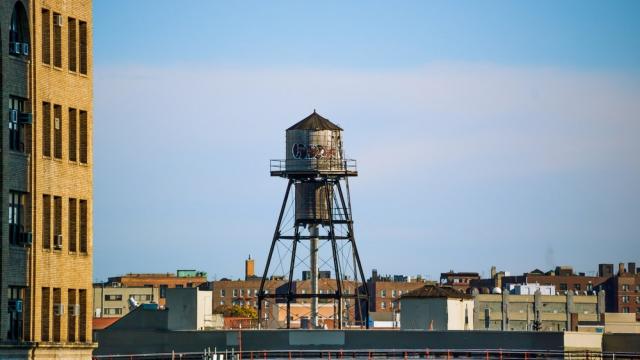Ah, New York — the sparkling skyline! The bustling streets! The… poop-filled water tanks? According to a new report from The New York Times, the city’s roughly 17,000 water tanks are totally unsanitary and widely unregulated.
First of all: Why does NYC still use water tanks? The answer is relatively simple: Many buildings taller than six or seven storeys need their own method of supplying water pressure to the floors below. There are thus nearly 20,000 of these tanks in the city, supplying drinking water to hundreds of thousands of people.
However, perhaps because of their ubiquity and permanence, it turns out the tanks have been relatively immune from safety inspections.
The New York Times took samples from water tanks in 12 buildings, and eight of them tested positive for coliform — an indicator for the presence of “pathogenic organisms of faecal origin.” Five also came back positive with E. coli. Some tanks aren’t actually closed to the outside, opening them up to squirrel and bird poop — anecdotes about animals (and even homeless people) living in the space between the water and the container top abound.
Perhaps more upsetting than that relatively small sample size is the fact that almost half of buildings randomly inspected by the health department couldn’t even provide proof that they test their tanks for bacteria at all. Many justify these findings by saying the samples are taken from a thick layer of mud and sediment that rests below the intake pipes — meaning that the water that arrives at your sink isn’t actually contaminated. But even a basic knowledge of biology disproves that rationale. Then there are the chemical contaminants, like an epoxy used by tank-building companies — made from a bisphenol A-based polymer (otherwise known as BPA).
In short, it’s a pretty scary read, even if you’re not a germophobe. But it’s also interesting, in a way, that a city that’s become so preoccupied with public health could overlook so major a source of contamination. How many other unregulated systems and infrastructural networks do each of us depend on? We tend to think of ourselves — and our government — as the product of a centuries-long evolution of thinking on public health and science. In fact, we’re still discovering the many ways in which we put ourselves at risk. [The New York Times]
Lead Image: Albert Pego/Shutterstock.
